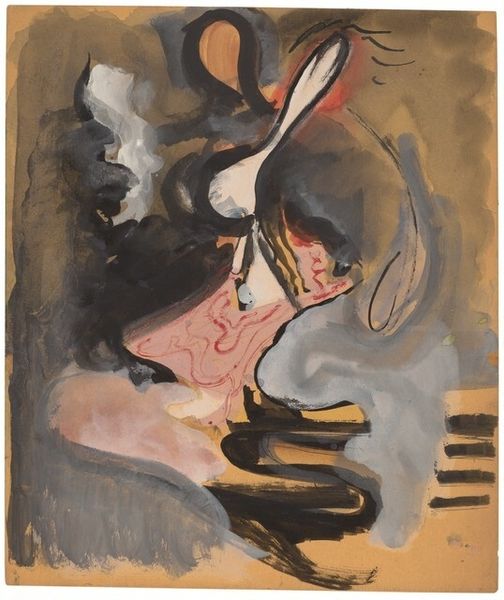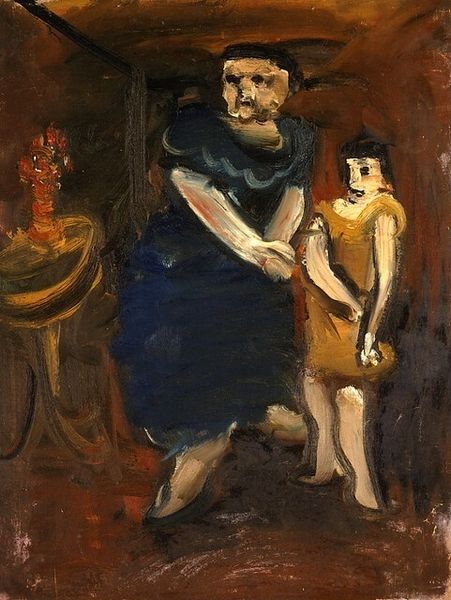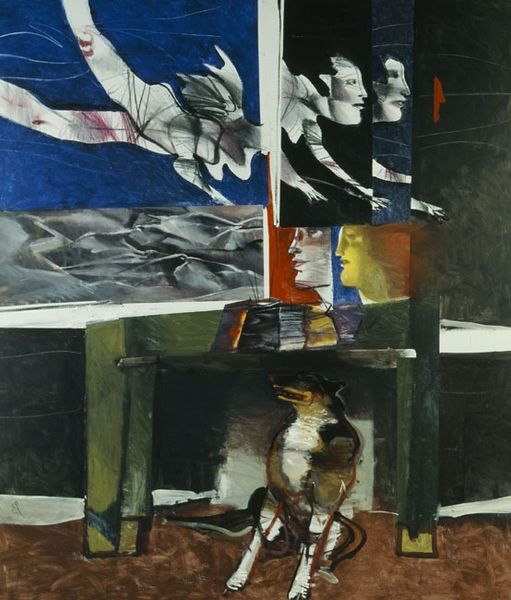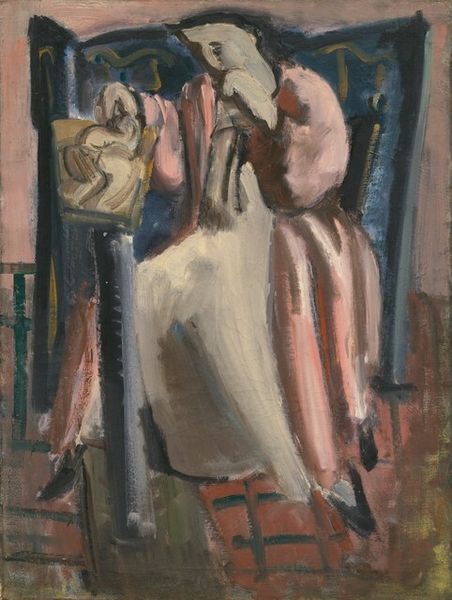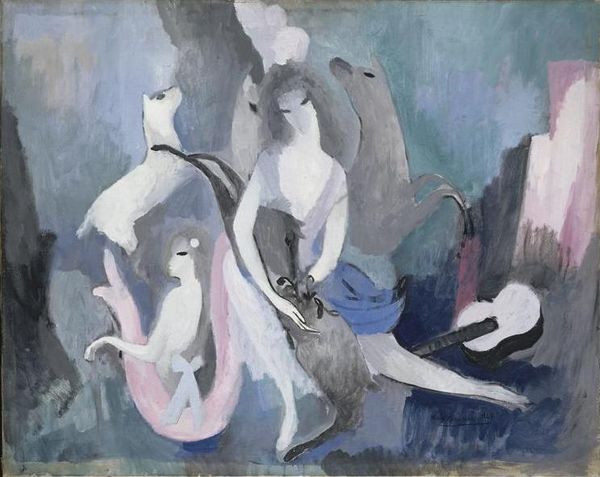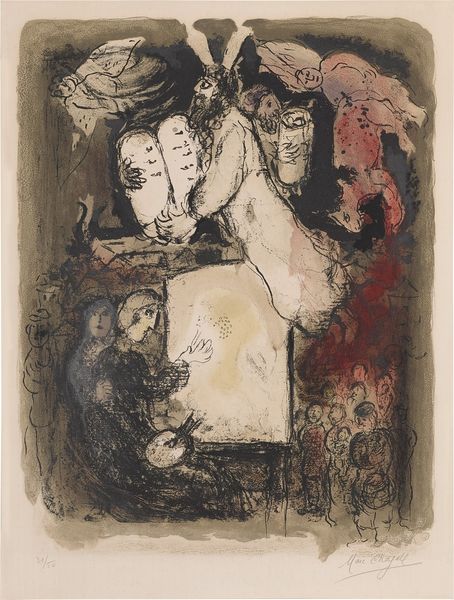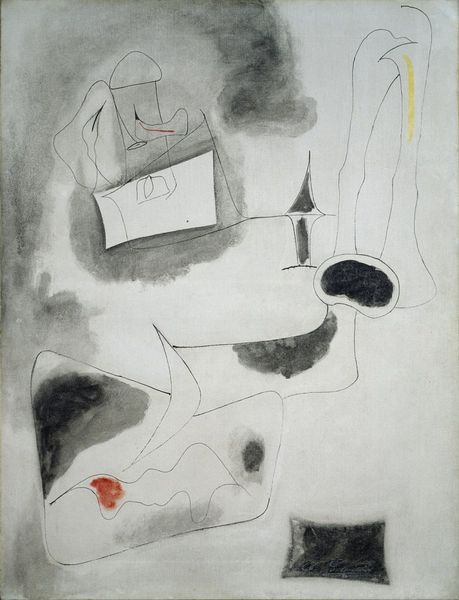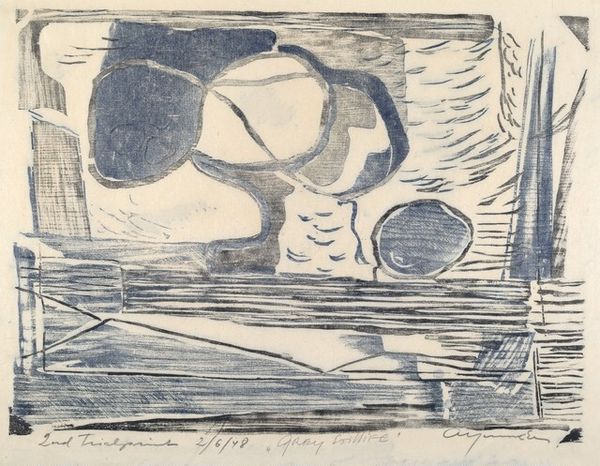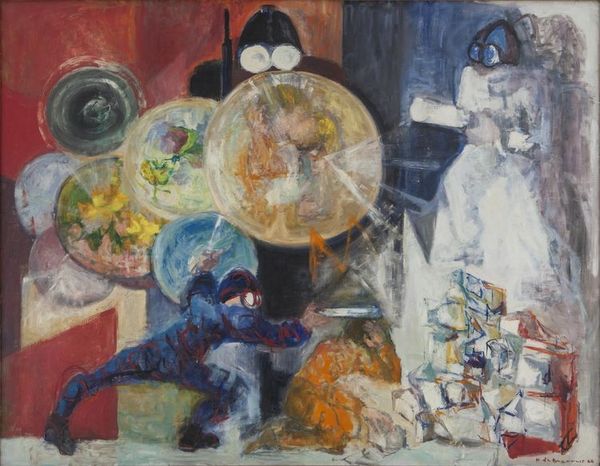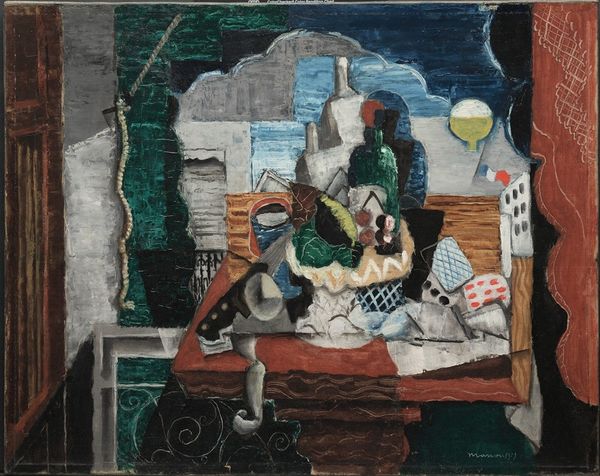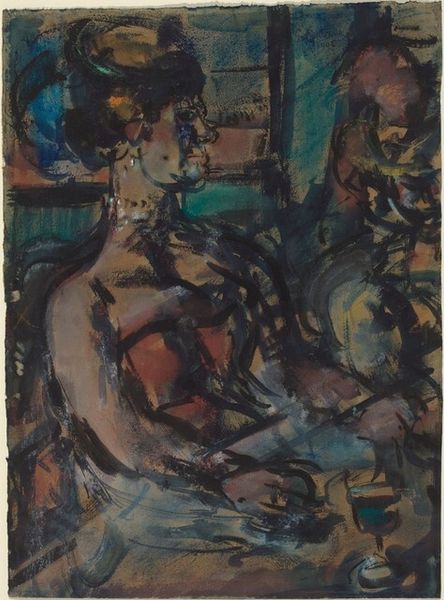
mixed-media, painting, acrylic-paint
#
abstract-expressionism
#
mixed-media
#
painting
#
acrylic-paint
#
abstract
Copyright: Dimitris Mytaras,Fair Use
Editor: Here we have Dimitris Mytaras's "Mirror with Mauve," created in 1964. It looks like a mixed-media piece, mainly acrylic. The composition is so dynamic. What do you see in this work? Curator: Intriguing. I observe a compelling tension between form and formlessness. Note the carefully applied blocks of color – the red, blue, and green – juxtaposed with the chaotic web of black lines. How do these elements interact? Editor: I see it. The blocks feel like they’re trying to contain the chaos, or maybe the chaos is trying to break them apart. Curator: Precisely. Consider the surface. The materiality, the texture of the paint, creates a tactile dimension. The thick application draws the eye to the surface plane, disrupting any illusion of depth. Do you perceive a focal point? Editor: I keep going back to that blue form. It's so prominent and anchored, like a heavy weight on the right side. But then my eyes dart around the rest of the painting. It seems there's a tension between the focus point that I see and wanting to consider the other elements that contribute to a harmonious and balanced composition, but one where the visual emphasis remains on that one focal point on the right. Curator: The artist certainly created the dynamism by activating a set of focal points, but your insight also suggests a complex formal interplay, challenging the viewer to reconcile these competing elements within a unified aesthetic experience. This piece truly emphasizes shape, color, and their interplay rather than representation, as the artist encourages close looking into its essence. Editor: This approach, focusing on color, materiality, shape, has helped me better decode the message within the abstract forms. Curator: Indeed. It is through such analysis that we come to better appreciate the intrinsic artistic language.
Comments
No comments
Be the first to comment and join the conversation on the ultimate creative platform.
